In the bustling world of city living, apartments offer cozy sanctuaries that can be transformed into vibrant, green havens. Whether you’re a seasoned plant enthusiast or just beginning to explore the joys of indoor gardening, the charm of filling your space with beautiful plants is undeniable. Cultivating an apartment garden is more than a decorative endeavor; it’s a chance to create a living tapestry that breathes life into your home and enhances your well-being.
For those who feel plants are beyond their reach due to space constraints, fear not—there are abundant options tailored for apartment living. Our exploration will guide you through selecting plants that thrive in smaller spaces, offering a fresh perspective on how to nurture beauty within your walls. You’ll discover how to choose the right plants for your light conditions, master the art of container gardening, and even learn how to troubleshoot common issues to keep your green companions flourishing.
By the end of this article, you’ll feel equipped with practical tips and newfound confidence to nurture your own indoor oasis. You’ll find that the joys of gardening are not limited to sprawling backyards but are ready to be embraced, even in the heart of urban living. Let’s embark on this journey together and unlock the secrets to harmonizing nature with modern apartment life.
Choosing Compact Plant Varieties
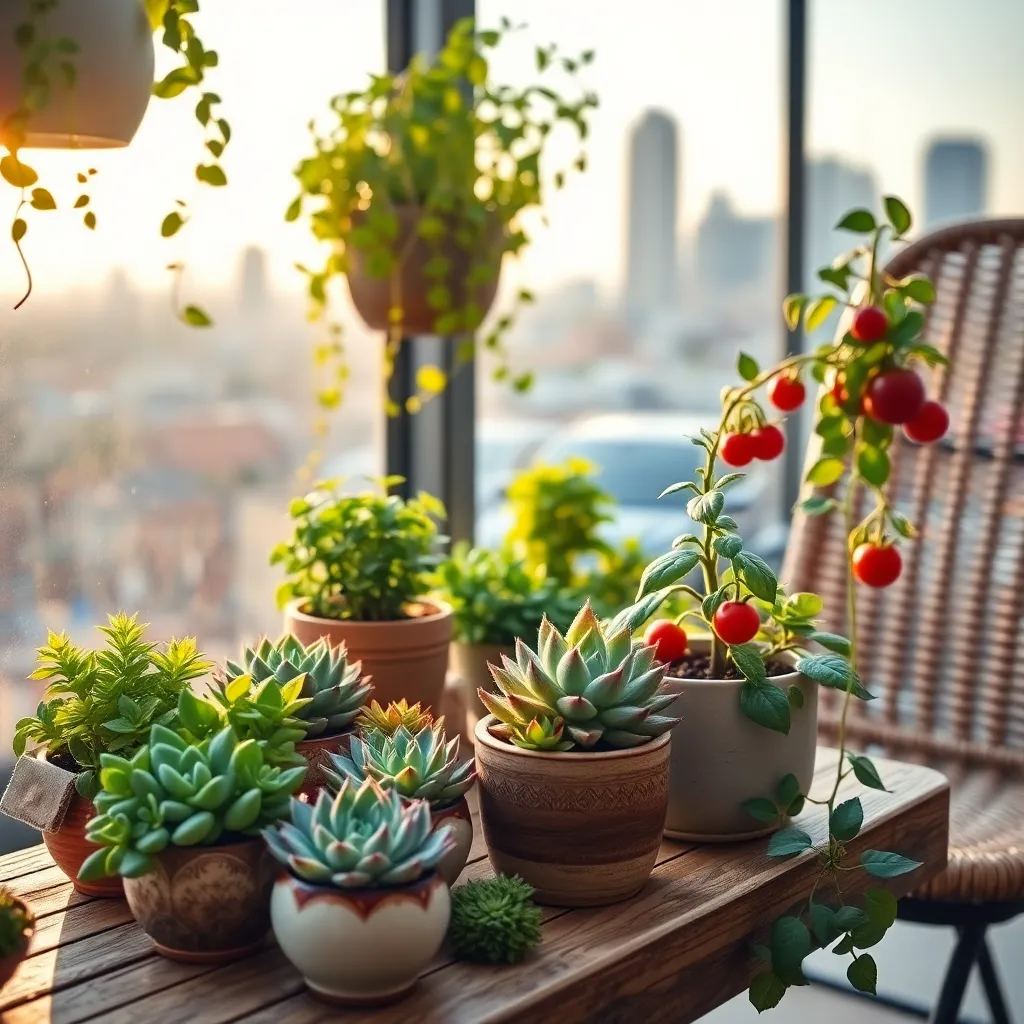
Choosing compact plant varieties is a perfect strategy for apartment dwellers with limited space. Many plants are specifically bred to stay small yet deliver lush foliage or vibrant blooms.
Start by considering succulents, which are ideal for small spaces and require minimal care. They thrive in well-draining soil and prefer a sunny windowsill, making them easy to maintain.
For those looking for flowering options, dwarf varieties of roses or geraniums can bring a splash of color to your apartment. Ensure they receive at least six hours of sunlight daily and keep their soil consistently moist but not waterlogged.
Advanced gardeners might try their hand at bonsai trees, which are both compact and rewarding to cultivate. These require specific pruning techniques and a balanced, slow-release fertilizer to maintain their miniature size and health.
Maximizing Natural Light Sources
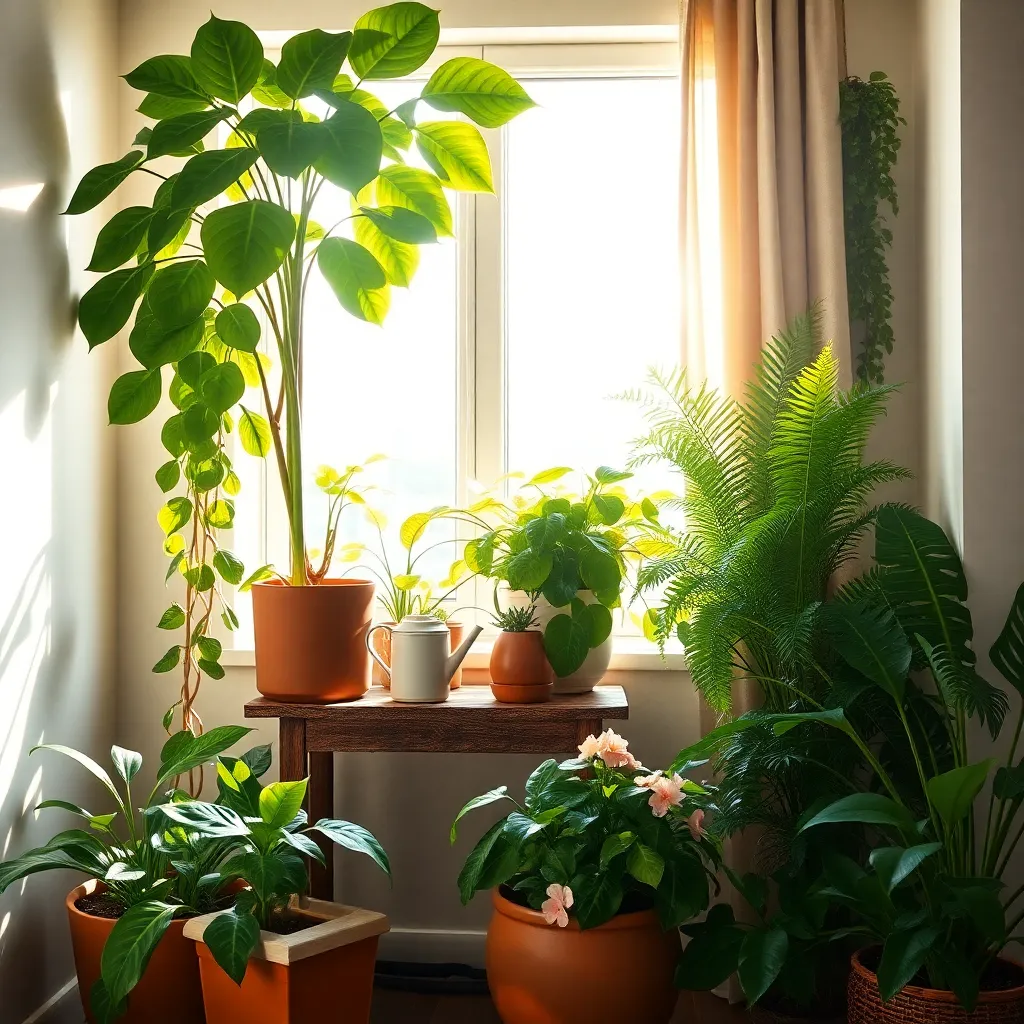
Maximizing natural light is essential for keeping your apartment plants healthy and vibrant. Begin by assessing which windows receive the most sunlight throughout the day to determine the best spots for light-loving plants like succulents and herbs.
Consider using sheer curtains to diffuse intense sunlight, which can sometimes scorch delicate leaves. This technique allows you to provide your plants with consistent, indirect light, which many indoor plants prefer.
Additionally, rotating your plants weekly ensures even growth and prevents them from leaning towards the light source. For apartments with limited direct sunlight, placing mirrors strategically can help reflect and amplify available light to reach shaded areas.
Advanced gardeners might explore installing artificial grow lights to supplement natural light, especially during shorter winter days. LED grow lights are energy-efficient and can be adjusted to mimic the natural light spectrum, promoting healthy plant development.
Low-Maintenance Indoor Greenery
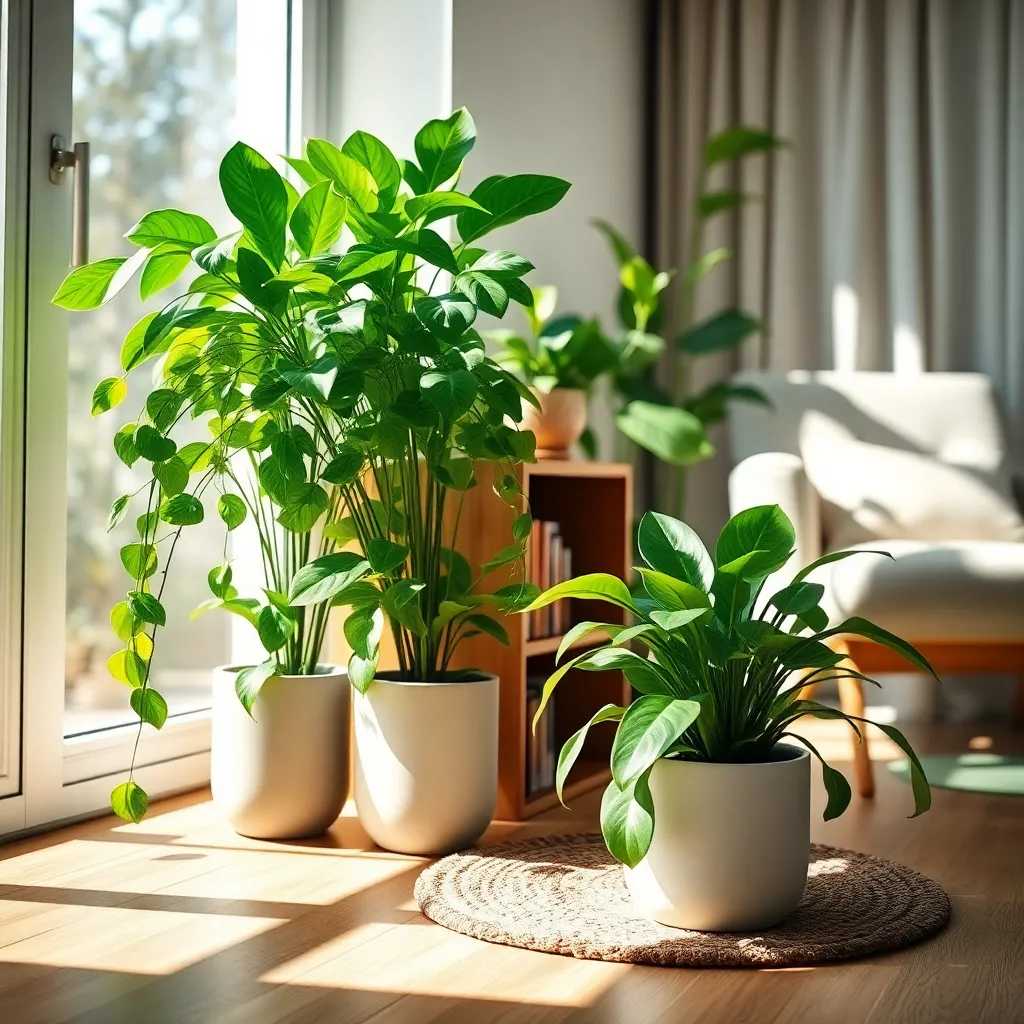
Incorporating low-maintenance indoor greenery is an excellent way to bring life to your apartment without demanding too much attention. Plants like the snake plant and pothos are perfect for beginners, thriving in a variety of light conditions and requiring minimal care.
To keep your snake plant healthy, water it sparingly as it prefers dry soil; this makes it ideal for people who might forget to water regularly. For optimal growth, use a well-draining cactus mix and place it in indirect light, although it can tolerate low-light conditions.
Pothos, another popular choice, is highly adaptable and can flourish in low light or bright, indirect sunlight. Water it when the top inch of soil feels dry; overwatering is a common mistake, so ensure its pot has good drainage.
Consider incorporating a ZZ plant for a touch of elegance with little effort. This plant is nearly indestructible and thrives on neglect; water it once every two to three weeks and use a standard potting mix to keep it happy.
Creative Vertical Gardening Ideas
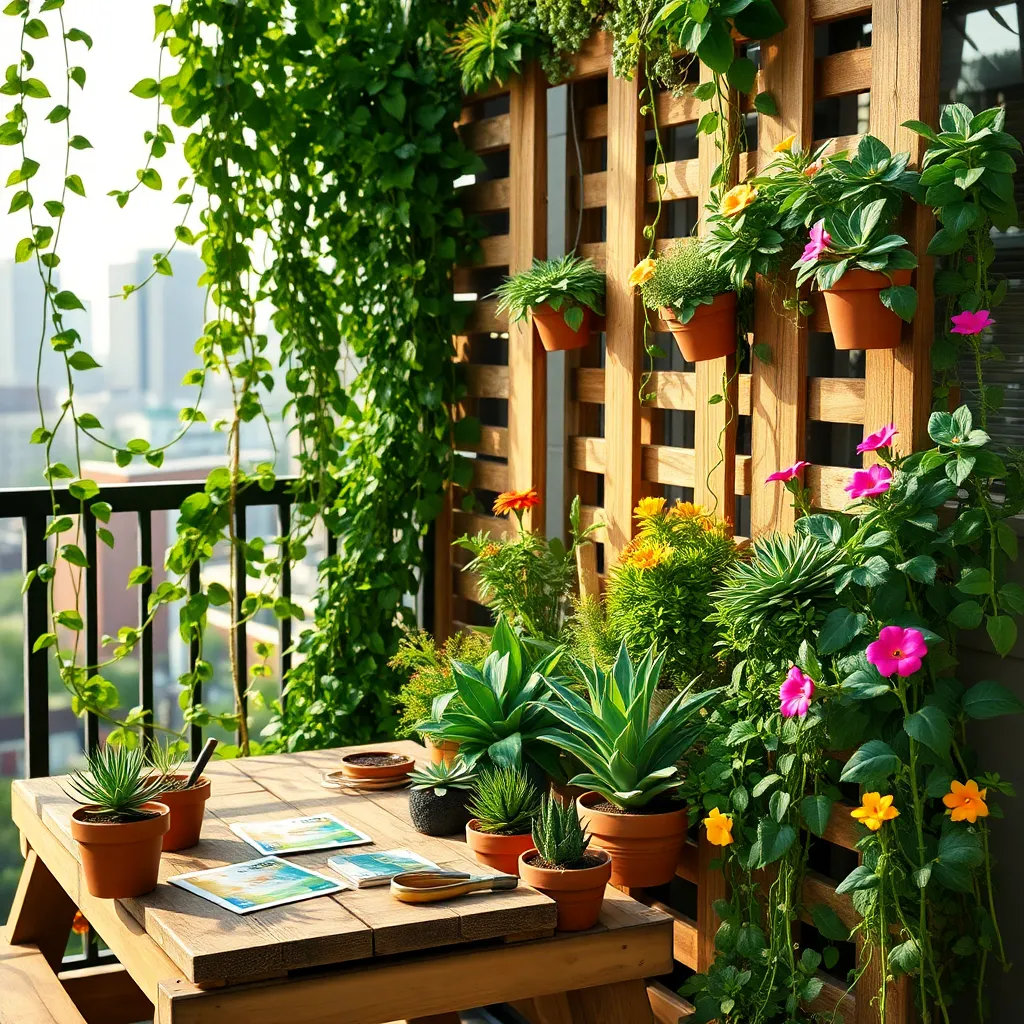
Vertical gardening is an innovative way to maximize space in apartment living. By using vertical space, you can create a lush green environment even in confined areas.
One practical approach is to use wall-mounted planters. These planters can be filled with easy-to-grow plants like pothos or ferns, which thrive in indirect light and require moderate watering.
Additionally, consider a trellis or a lattice structure for climbing plants. Opt for species such as sweet peas or morning glories, which can add vibrant color and fragrance to your apartment.
For a more advanced option, hydroponic wall planters offer soil-less growth. This method requires careful monitoring of nutrient solutions, but can lead to lush growth with minimal mess.
Succulents are another excellent choice for vertical gardens due to their low water needs. Use a mix of varieties such as echeveria and sedum to create interesting textures and colors.
When setting up your vertical garden, ensure you use a sturdy support system. This is crucial for safety and to adequately support the weight of the plants and growing medium.
Regular maintenance, such as pruning and checking for pests, will keep your vertical garden thriving. Keep a spray bottle handy for misting leaves, which can help maintain humidity levels, especially in dry indoor environments.
Decorative Planters and Containers
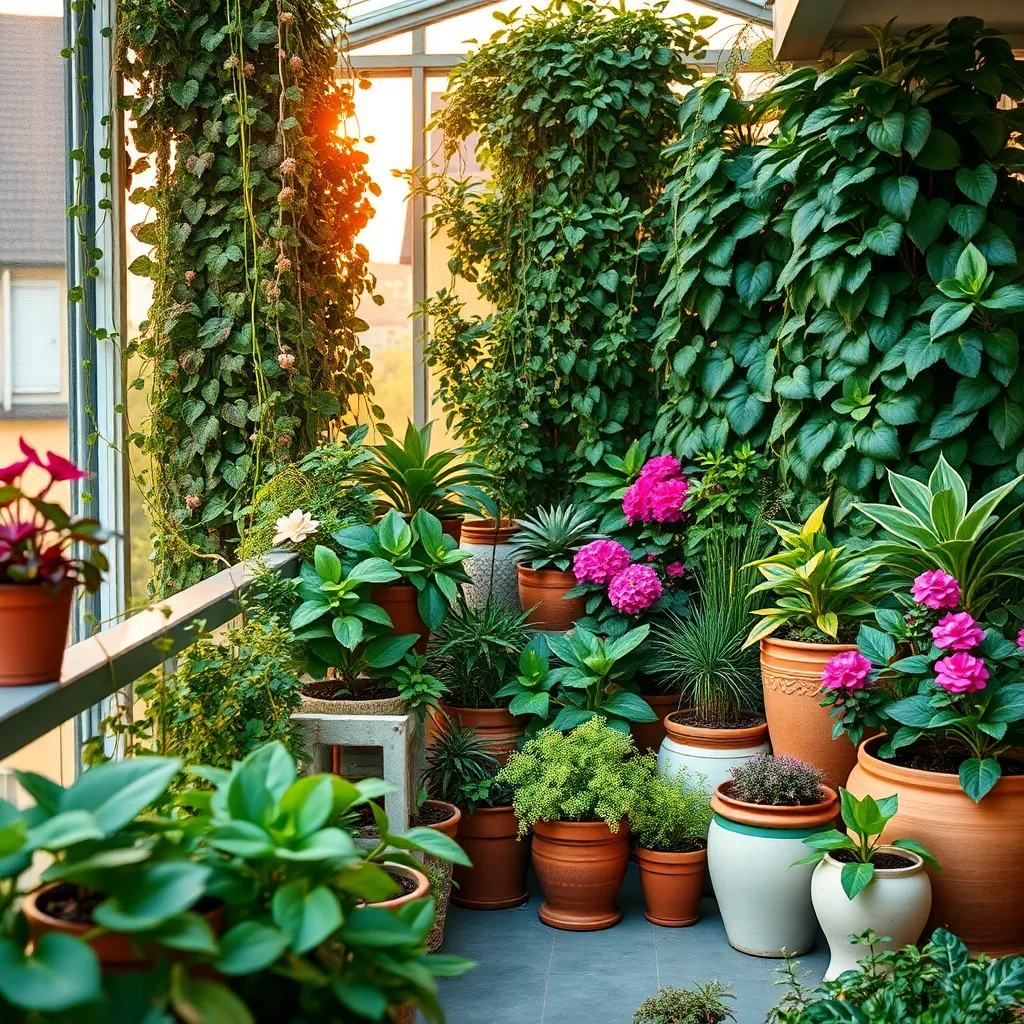
Choosing the right decorative planters and containers can transform your apartment into a green oasis. Opt for containers that complement your interior style while providing adequate space for root growth.
To make the most of limited space, consider using multi-tiered or stackable planters. These designs allow you to cultivate a variety of plants without consuming valuable floor area.
Ensure your containers have proper drainage holes to prevent waterlogging, which can be detrimental to plant health. For an extra layer of protection, place a saucer beneath each pot to catch excess water.
Beginner gardeners may start with easy-care plants like pothos or succulents, which thrive in a variety of conditions. These plants require minimal watering—every one to two weeks—making them ideal for busy lifestyles.
Advanced gardeners might explore self-watering planters that reduce the need for frequent watering. These planters have a reservoir at the base that supplies a steady amount of moisture to the roots, ensuring consistent hydration.
- Choose a lightweight potting mix for better aeration and drainage.
- Consider adding liquid fertilizer every four to six weeks to promote healthy growth.
By mixing different textures and heights within your containers, you can create an aesthetically pleasing display. Experiment with combining trailing plants with upright varieties for maximum visual impact.
Conclusion: Growing Success with These Plants
As you embark on the journey of cultivating a more vibrant living space, remember that the plants you choose can mirror the nurturing dynamics of your relationships. We’ve explored five key concepts: the importance of choosing the right spaces to cultivate growth, the power of consistent care and attention, understanding the unique needs of each plant or partner, embracing the beauty of patience, and recognizing the mutual benefits of a thriving environment. These insights not only enhance your home but also enrich your personal connections.
To take action today, consider selecting one new plant to bring into your apartment. Use this as an opportunity to apply these relationship principles, observing how your care transforms both your living space and your relational mindset.
For ongoing inspiration and practical tips, save or bookmark this article. It will serve as a valuable resource as you continue to nurture both your home and your relationships.
Looking ahead, remember that success in any relationship—whether with plants or people—comes from dedication and understanding. With each small step, you are investing in a future filled with growth and connection. Embrace this journey, knowing that your efforts will bloom into something truly beautiful.
